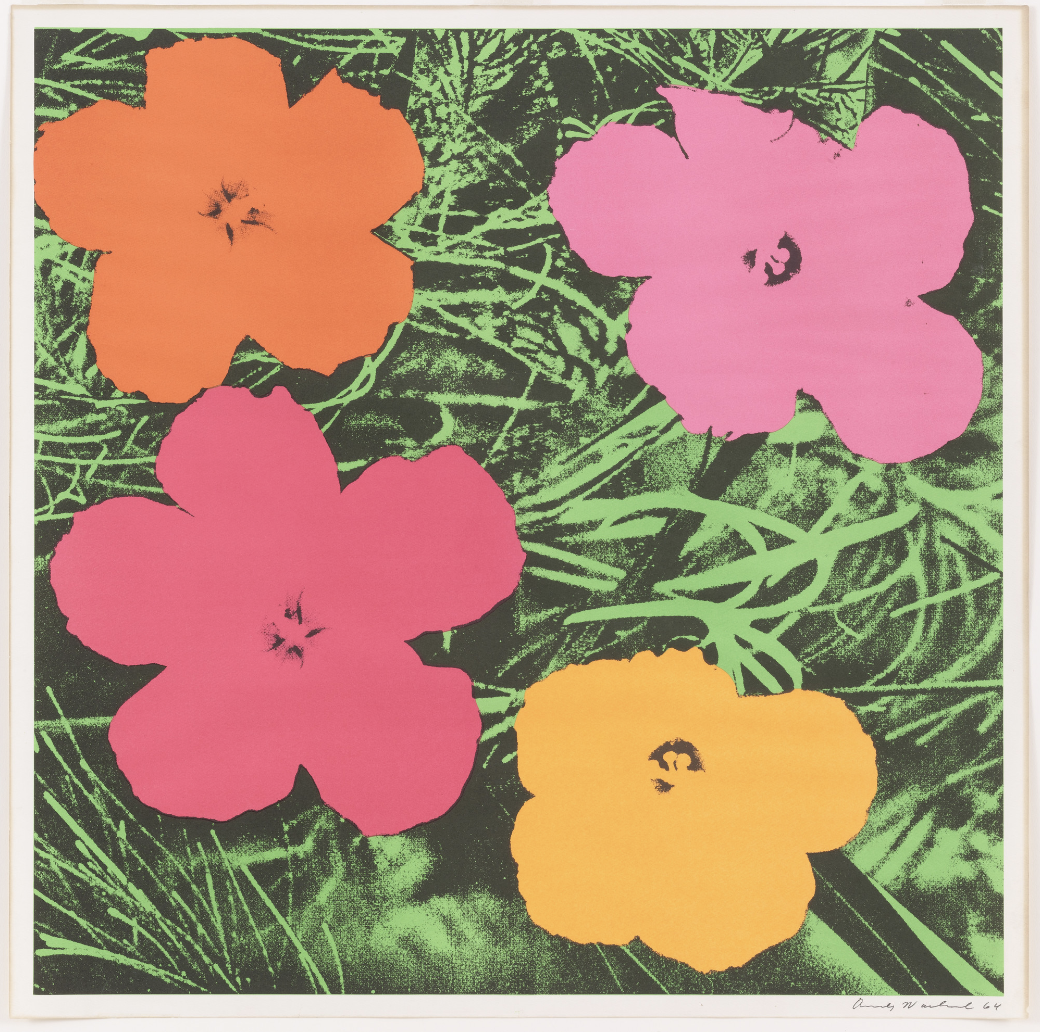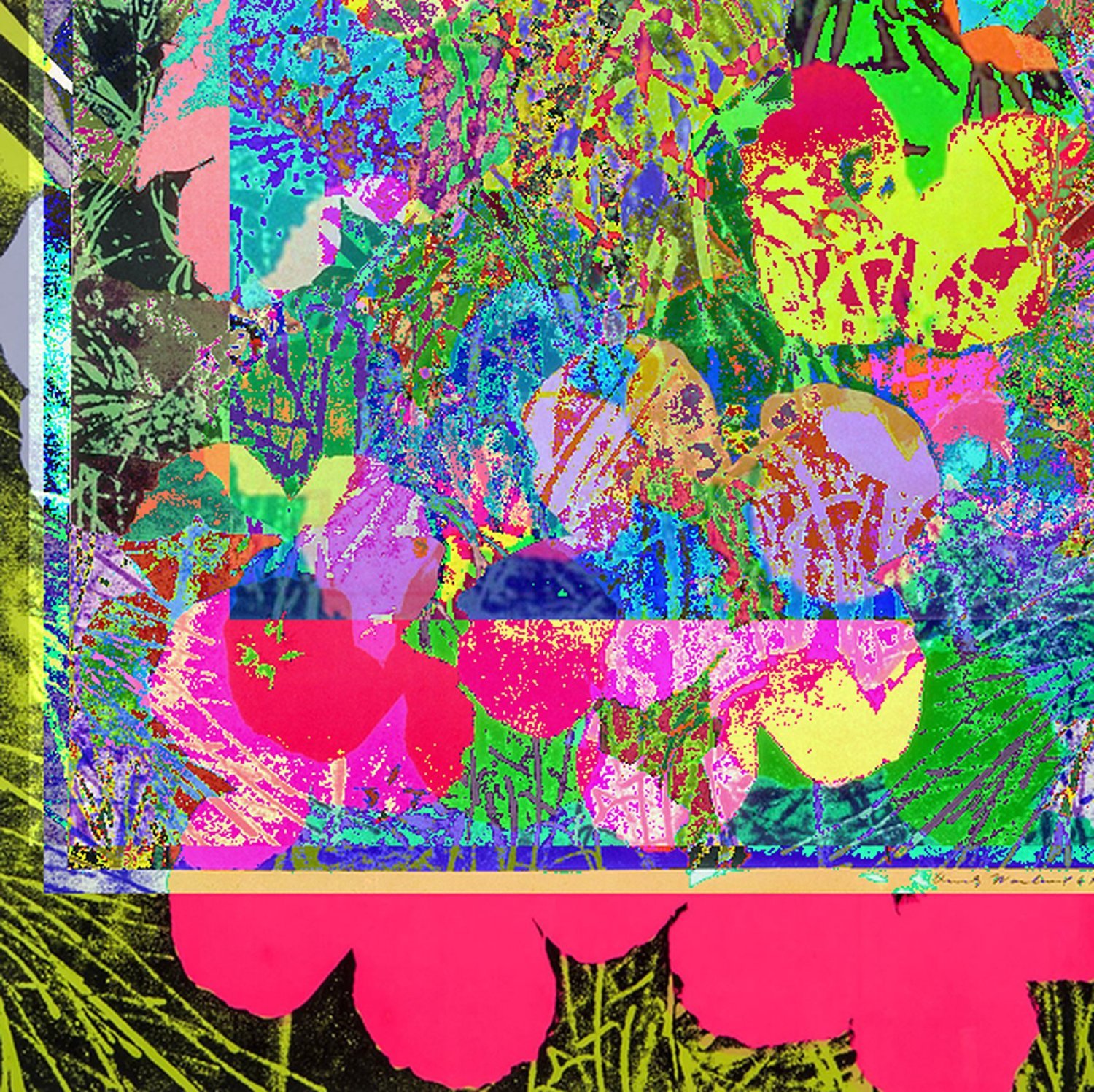anonymous_warhol-flowers by Cornelia Sollfrank
The “anonymous_warhol-flowers”, an integral part of the ongoing artistic research project “This Is Not By Me”, was initiated in 2004 by Cornelia Sollfrank. This project represents Sollfrank’s exploration into themes such as digital authorship, originality, copyright, and ownership. By employing the net.art generator with a focus on the iconic Warhol flowers as a case study, she examines these concepts. In this article, we delve into the creation process and background of this work, offering insights into the complexities and legal nuances of artistic expression in the digital age.
Cornelia Sollfrank, based in Berlin, Germany, is an artist, researcher, and author. In the 1990s, she emerged as a pioneer of net art and a key figure in cyberfeminism. Her work explores new models of authorship and the deconstruction of myths surrounding originality. At the core of her work is the net.art generator, a computer program that recombines and collages material from the internet, which has significantly impacted her research into intellectual property.
One of her works that investigates these themes using this program is the “anonymous_warhol-flowers” project. It exists in two different forms: as digital collages stored in an online database, and selected works from this database have been chosen for production as physical prints. The latter are produced using various techniques, including inkjet and laser print on photo paper, as well as on canvas and aluminum, and silkscreen prints on paper. This project has been showcased in many different contexts across Germany, Netherlands, Sweden, Spain, UK, Philippines, and Hongkong, including our iconic "Automat und Mensch" exhibition in 2019 in Zürich.
net.art generator
The net.art generator (nag) is a computer program (Perl script) that has been around for more than 25 years, making it a well-known piece of internet art. The first net.art generator, nag_01, was developed in 1997 in collaboration with Ryan Johnston from the Banff Media Center, Canada. Since then, a number of other versions have been created over the years. In 2003, Cornelia Sollfrank developed the concept for nag_05 in close collaboration with programmer Panos Galanis from the Hamburg-based company IAP. This version of the program interacts with the internet to gather image materials and assemble them into new collages. It creates images that reflect both the machine's workings and their origin environment—the Internet.
The creation process begins when a title is entered. The title acts as a search term for Google, initiating a query. The search results then undergo a transformation by the server-side program ImageMagick, culminating in the production of a new collage. It generates unique images every day, presenting how the online source material is changing over time.
Among the projects generated by nag is the anonymous_warhol-flowers, which uses "warhol flowers" as the search term. Each artwork's title embodies its technical origin with three elements: the author's name (displaying as anonymous if no name is entered), the search term used for material selection, and the exact time and date of creation according to the server location, thus providing a unique timestamp and context for each piece.
Andy Warhol's Flower Paintings at Leo Castelli Gallery, 1964. Image: Creative Commons
Flowers by Warhol
The search term "warhol flowers" directly connects to Andy Warhol's series, a portfolio of prints showcased at the artist's highly successful solo exhibition at the Leo Castelli Gallery in New York in 1964. This exhibition marked a sell-out success and also represented a significant moment in his career.
The Flowers prints stood out from traditional still life floral paintings. For Warhol's approach to creating flowers, where he focused on a single subject and replicated it across multiple canvases, mirrored the mechanical and commercial reproduction techniques seen in advertising and mass media. Warhol said, “The reason I'm painting this way is that I want to be a machine, and I feel that whatever I do and do machine-like is what I want to do.” This methodology, representing a unique moment in art history where production emulated machine processes with a singular subject, drew Cornelia Sollfrank's attention as it echoed the fundamentals of generative art.
Andy Warhol, Flowers, 1964, Offset lithograph, Image: MOMA
Andy Warhol, Flowers, 1964, Acrylic on Canvas, Image: Peggy Guggenheim Collection
In addition to this, there was another aspect that piqued Sollfrank's interest in utilizing the pop artist’s flowers as motifs. For the Flowers series, Warhol used a photograph of hibiscus flowers taken by Patricia Caulfield, a nature photographer, which appeared in a 1964 issue of Modern Photography. Caulfield later sued Warhol for using her photograph without permission, challenging long-standing definitions of “fine art” that prioritize originality and authorship. This aspect of utilizing pre-existing images also intrigued Sollfrank, particularly in the context of the digital age. She discovered Warhol's flower motif in 2003, and began to work with it in her own project, further exploring themes of reproduction and originality in art.
Legal aspects
Andy Warhol's approach is significantly relevant for its adoption of pre-produced materials and innovative use of reproduction techniques. By extending Warhol’s work, Sollfrank's flowers project broadens the discussion of issues in digital art related to originality, authorship, copyright, and open-source. It delves, for example, into the question who might be considered the author and owner of an image created by the net.art generator. The potential authors could be the computer program, the programmer, the user operating the program, the original work's author, or the artist conceptualizing the project. Interestingly, current law suggest that the conceptual artist might be the only one definitively excluded as the owner, as elaborated in the work copyright © cornelia sollfrank 2004.
The project also challenges the concept of copyright and authorship, especially when the digital images are treated as independent artworks—printed, exhibited, and sold. To exhibit the work, authorship is typically attributed to the person who made it, in this case, the artist, “Cornelia Sollfrank”. This legal dilemma was highlighted in 2004 when an exhibition in Basel was canceled due to concerns over the printed version of the “anonymous_warhol-flowers” potentially causing legal issues. The artist sought the opinions of four copyright law experts, each offering a different conclusion, thus presenting the large legal grey area in the use of protected images. The lawyers’ discussion of the case has been captured in the video installation “Legal Perspective”.
The flower motif, with its rich history of artistic appropriations, serves as an ideal subject for this investigation, offering a multi-layered perspective on authorship. The selection of this motif not only seeks to extend Warhol's experimentation into the digital age but also to contribute to the ongoing narrative of the motif itself. The act of reworking the flower motif, previously central to one of the early legal battles over artistic copyright infringement, presents a fresh opportunity to challenge and examine the legal frameworks in the context of internet conditions.
OG Flowers
The net.art generator has the capacity to continually connect with new discourses. On May 22, 2010, a significant date in the history of crypto currencies, Sollfrank revisited the project, creating 100 “anonymous_warhol-flowers”, the “OG Flowers” using the net.art generator.
Later, these flowers were minted as NFTs to continue the discourse, offering a fresh perspective on the concepts of authorship and ownership in the digital age. These NFTs introduce a level of uniqueness that was previously unattainable in digital reproductions. Although questions about the authorship of processed images still persist in the gray areas of copyright law, blockchain technology provides a definitive answer to ownership and ensures that each piece is recognized as an original. The net.art generator reaches a new level: that of speculation in a new type of commodity generated by the discourse on NFTs.













